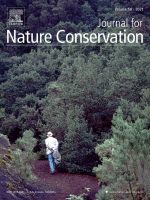Ver ítem
- xmlui.general.dspace_homeCentros Regionales y EEAsCentro Regional Patagonia SurEEA Santa CruzArtículos científicosxmlui.ArtifactBrowser.ItemViewer.trail
- Inicio
- Centros Regionales y EEAs
- Centro Regional Patagonia Sur
- EEA Santa Cruz
- Artículos científicos
- Ver ítem
Human footprint defining conservation strategies in Patagonian landscapes: Where we are and where we want to go?
Resumen
Understanding human influence on ecosystems and their services is crucial to achieve sustainable development and ensure the conservation of biodiversity. In this context, the human footprint index (HFI) represents the anthropogenic impacts on ecosystems and the natural environment. Our objective was to characterize the HFI in Southern Patagonia (Argentina) across the landscape, qualifying the differences among the main ecological areas and especially the
[ver mas...]
Understanding human influence on ecosystems and their services is crucial to achieve sustainable development and ensure the conservation of biodiversity. In this context, the human footprint index (HFI) represents the anthropogenic impacts on ecosystems and the natural environment. Our objective was to characterize the HFI in Southern Patagonia (Argentina) across the landscape, qualifying the differences among the main ecological areas and especially the forested landscapes. We also assessed the potential utility of HFI to identify priority conservation areas according to their wilderness quality and potential biodiversity values. We created a HFI map (scores varied from 0 representing high wilderness quality to 1 representing maximum human impact) using variables related to direct (e.g. infrastructure) and indirect (e.g. derived from economic activities) human impacts, including settlements, accessibility, oil industry, and sheep production. HFI varied significantly across the natural landscapes, being lower (0.07−0.11) in remote ecosystems close to the Andes Mountains and higher (0.38−0.40) in southern areas close to the provincial capital city. Forested landscapes presented different impact values, which were directly related to the economical values of the different forest types. We determined that the current protected area network is not equally distributed across the different ecological areas and forest types. Priority conservation areas were also identified using the fragmentation produced by the human impact, the patch size, and the potential biodiversity values. HFI can present high compatibility with other land-use management decision making tools, acting as a complement to the existing tools for conservation planning or management.
[Cerrar]

Autor
Rosas, Yamina Micaela;
Peri, Pablo Luis;
Pidgeon, Anna Michle;
Politi, Natalia;
Pedrana, Julieta;
Díaz-Delgado, Ricardo;
Martinez Pastur, Guillermo José;
Fuente
Journal for nature conservation 59 : 125946. (2021)
Fecha
2021-02
Editorial
Elsevier
ISSN
ISSN 1617-1381
Formato
pdf
Tipo de documento
artículo
Palabras Claves
Derechos de acceso
Abierto
 Excepto donde se diga explicitamente, este item se publica bajo la siguiente descripción: Creative Commons Attribution-NonCommercial-ShareAlike 2.5 Unported (CC BY-NC-SA 2.5)
Excepto donde se diga explicitamente, este item se publica bajo la siguiente descripción: Creative Commons Attribution-NonCommercial-ShareAlike 2.5 Unported (CC BY-NC-SA 2.5)


